Trees
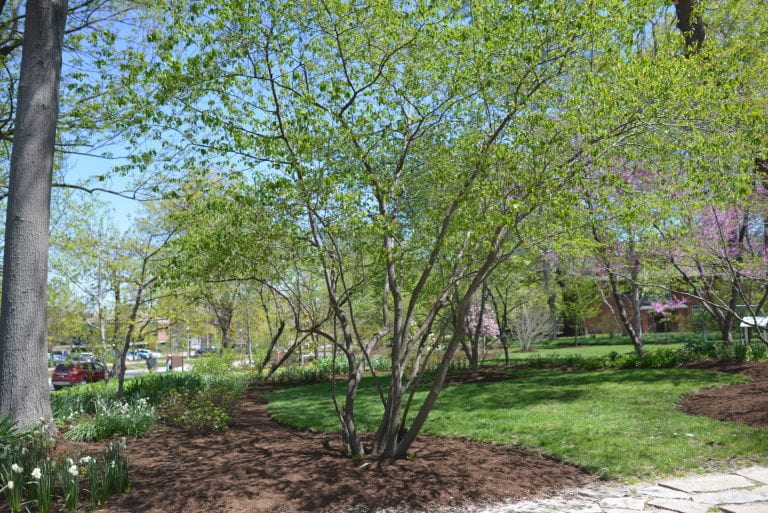
Downy Serviceberry
Arbor walk #40, Treekeeper ID #4578
This Missouri native tree offers edible, berry-like fruit that changes color throughout the seasons. The competition for the fruit is stiff because they are a favorite of many bird species.
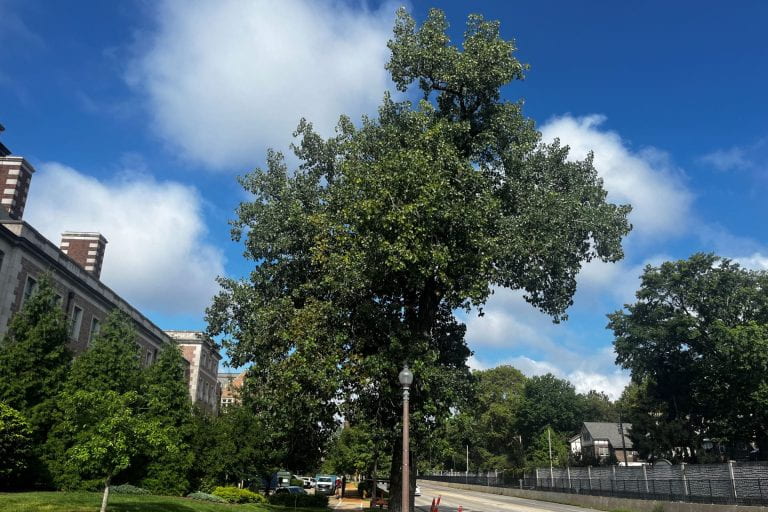
Eastern Cottonwood
Arbor Walk #167
Native to much of the Eastern United States and Southern Canada, with a tall form reaching up to 100 feet in height and flexible fluttering leaves, the Eastern Cottonwood is a staple of lowlands across North America.
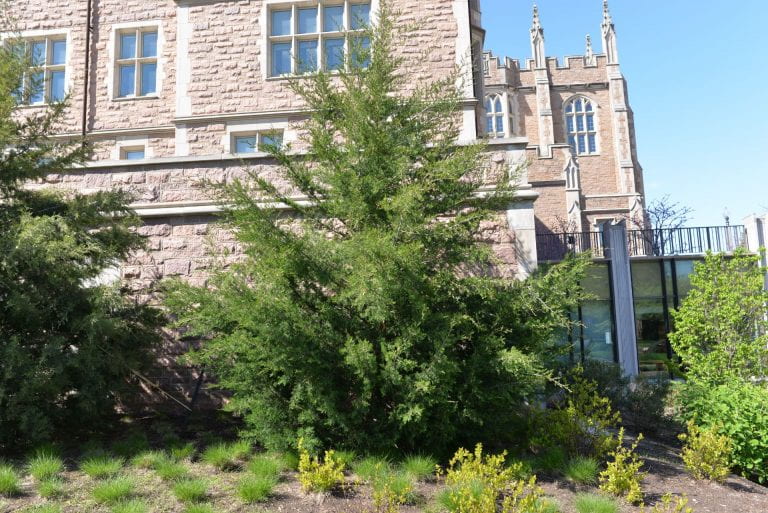
Eastern Red Cedar
Arbor walk #51, Treekeeper ID #1648
This tree is native to Eastern North America. In Missouri it grows in a variety of habitats across the state and is tolerant of a wide range of soil conditions.
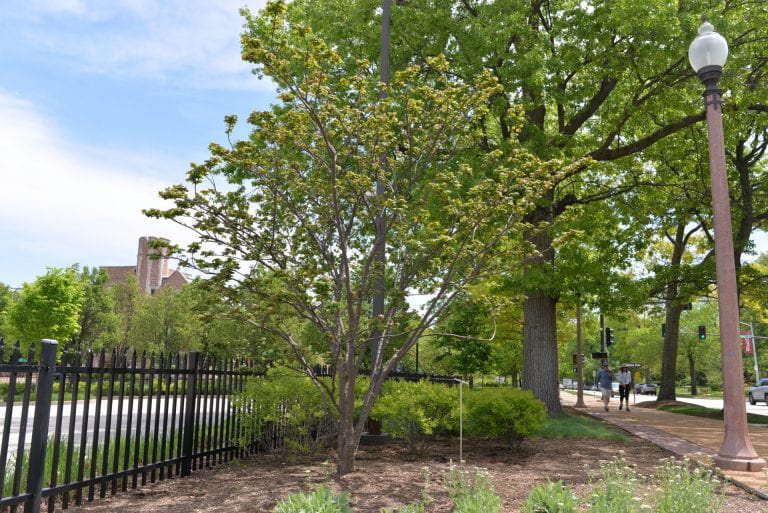
Eastern Redbud
Arbor walk #38, TreeKeeper ID #3141
This deciduous understory tree is the state tree of Oklahoma and is native to Missouri and much of the Eastern and Central US. It grows in medium moisture, medium fertility soils.
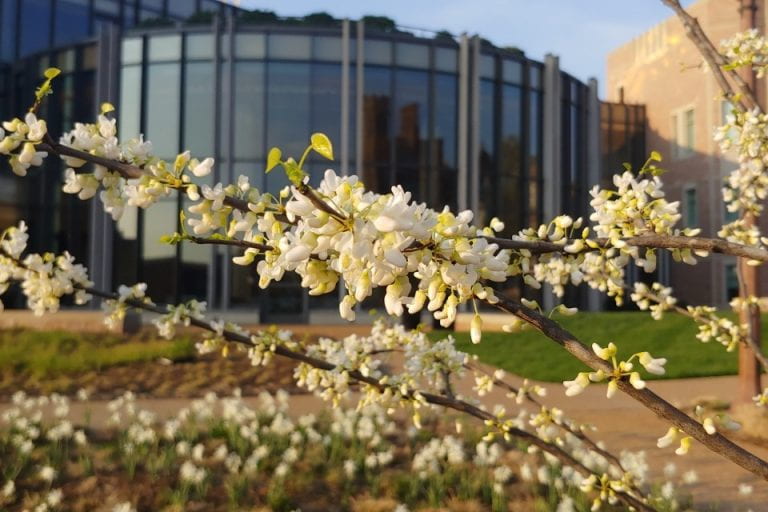
Eastern Redbud, White
Arbor Walk #86, Treekeeper ID #5725
White Bud is a native cultivar to the Missouri Area with heart-shaped leaves. Its parentage comes from the native Red Bud seen throughout Missouri.
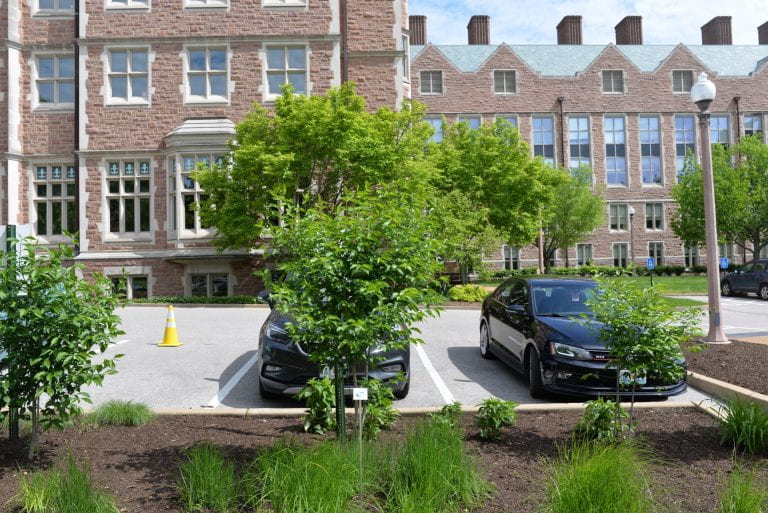
Eastern Wahoo
Arbor walk #47, Treekeeper ID #6770
This small tree is a Missouri and Chicago-region native offering attractive bright red fruit and beautiful color in the fall.
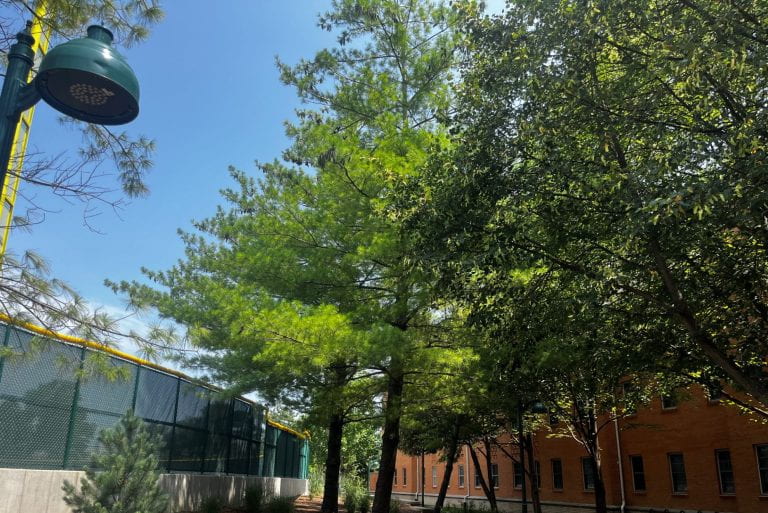
Eastern White Pine
Arbor Walk #134
The Eastern White Pine (Pinus strobus) is considered to be the tallest tree east of the Rocky Mountains, and one of the most historically important. This tree, which ranges from 80' up to 180+' at its record tallest, was the premier tree for timber in North America in the 18th and 19th century. Due to its massive demand in furniture, construction, and farming, stands of this pine were dramatically wiped out by 1900.
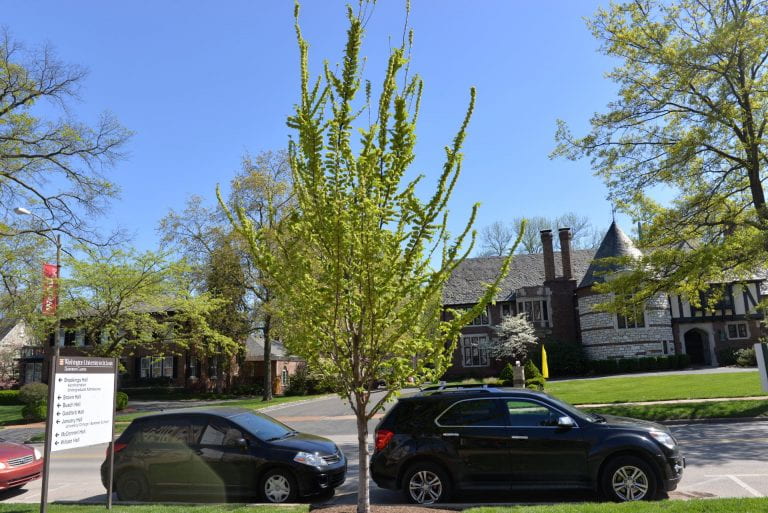
Emerald Sunshine Elm
Arbor walk #52, Treekeeper ID #1676
This Asian hybrid Elm is a relatively small cultivar growing 35 feet high and 25 feet wide. It has glossy green leaves which turn yellow in the fall.
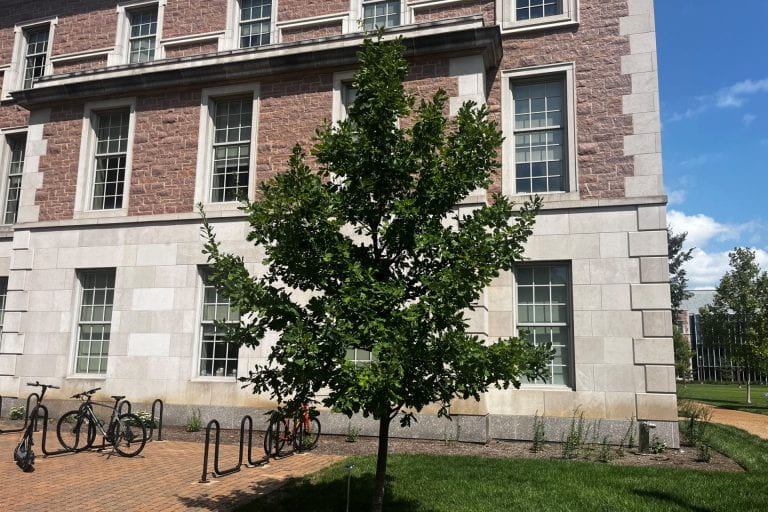
English Oak
Arbor walk #99, Treekeeper ID #6570
English Oak is native and found in mixed woodland areas and planted widely in North America since the 1600s. It has long been a timber source in England.
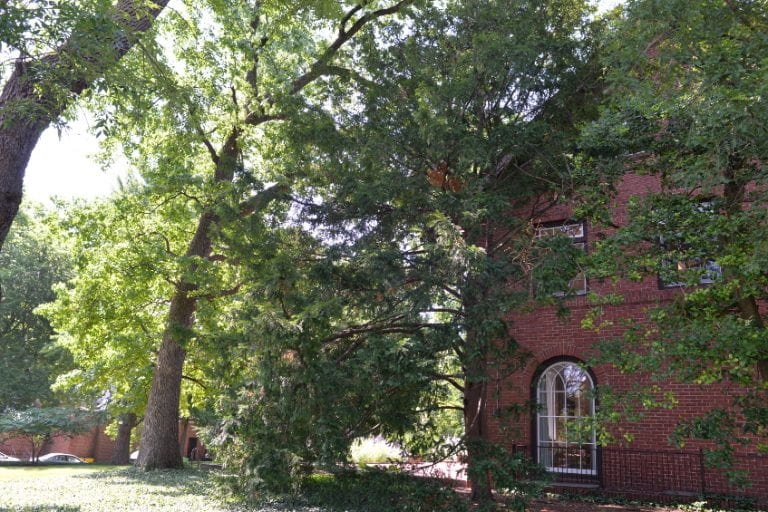
English Yew
Arbor walk #65, Treekeeper ID #5329
Though associated with England, this tree is actually native to all of Europe, as well as southwestern Asia and Northern Africa. Red-brown scaly bark and evergreen dark green foliage ensures this tree is an attractive addition to landscapes year-round.
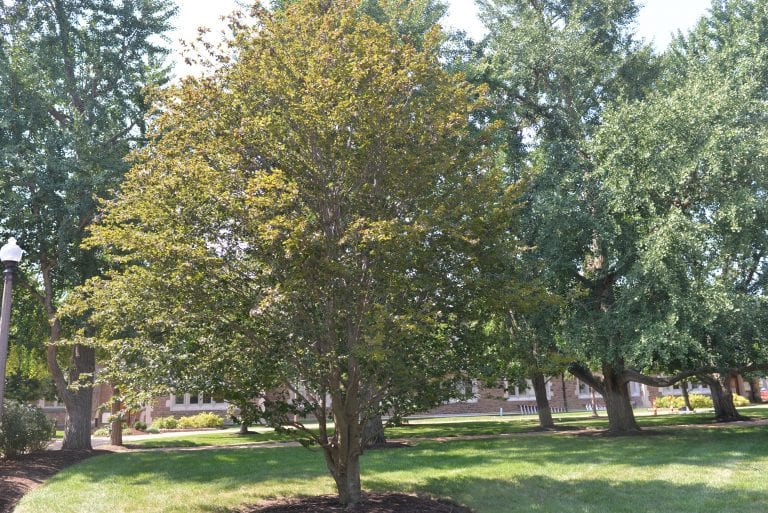
European Beech
Arbor walk #14, Treekeeper ID #1691
This beautiful non-native tree is adaptable to the Midwest. It has golden bronze leaves in the fall and its bark has a gray, elephant-hide appearance.
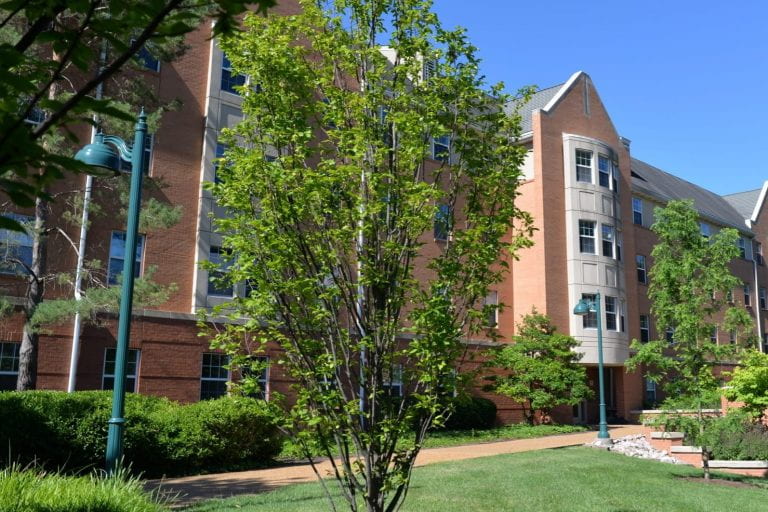
European Hornbeam
Arbor walk #74, Treekeeper ID #2259
This adaptive species is often grown as a shield or hedge plant in urban settings, as it grows a thick canopy that extends most of the way to the ground.
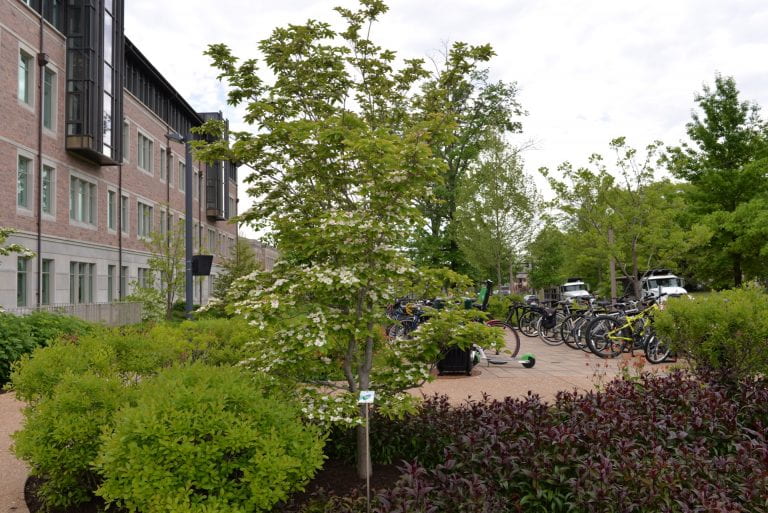
Flowering Dogwood
Arbor walk #53, Treekeeper ID #1410
Often claimed as the most beautiful of North America’s native flowering trees, the Flowering Dogwood is the state tree of both Missouri and Virginia. Its early-spring blooms of showy white petals surrounding tiny clusters of yellow dogwood flowers are among the tree's most dramatic characteristics.
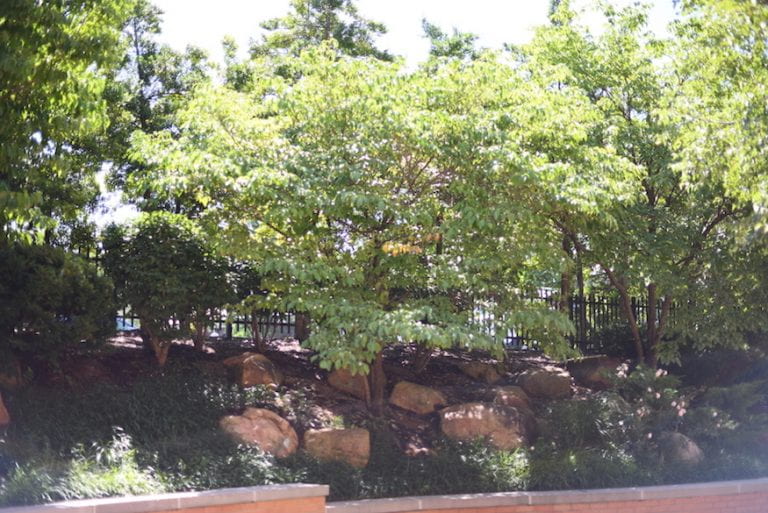
Flowering Dogwood
Arbor walk #81, Treekeeper ID #3692
This is a small, beautiful, adaptive, flowering tree, blooming in early spring. It has white flowers and oval dark green leaves which turn into shades of red in the fall and it grows bitter, inedible bright red fruits.
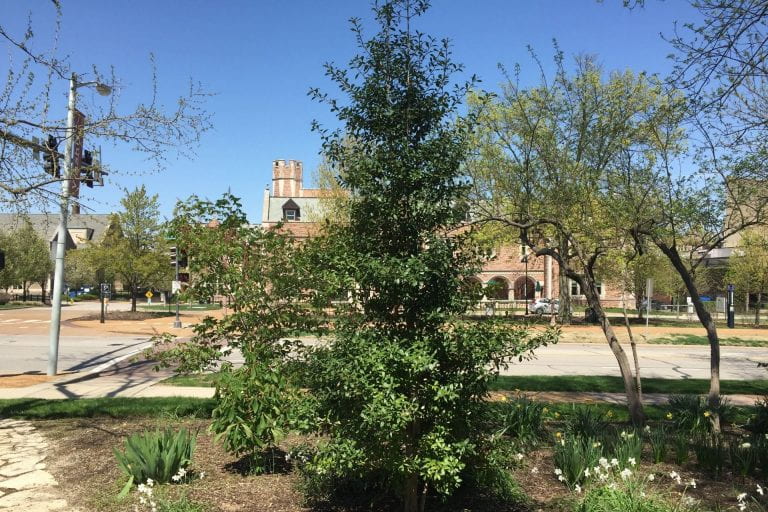
Foster Holly
Arbor walk #39, Treekeeper ID #4373
A naturally occurring hybrid species of American Holly and Dahoon Holly, it was found growing in the wild in Florida in 1924. This is a broadleaf evergreen tree of small to medium stature that prefers well-drained, slightly acidic soil and dislikes extreme hot and cold temperatures.
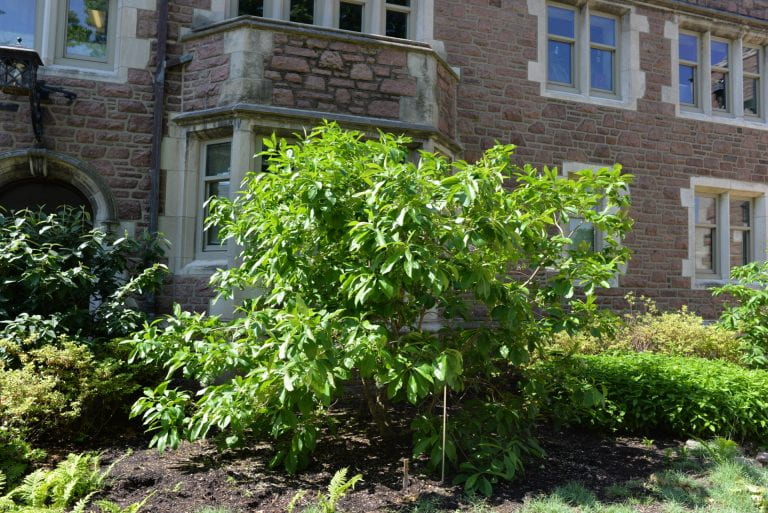
Fringe Tree
Arbor walk #33, Treekeeper ID #5592
This tree is a Missouri native which grows easily in fertile, moist soil. In the wild, it typically grows at forest transition boundaries, along stream banks, or in the margins of limestone glades.
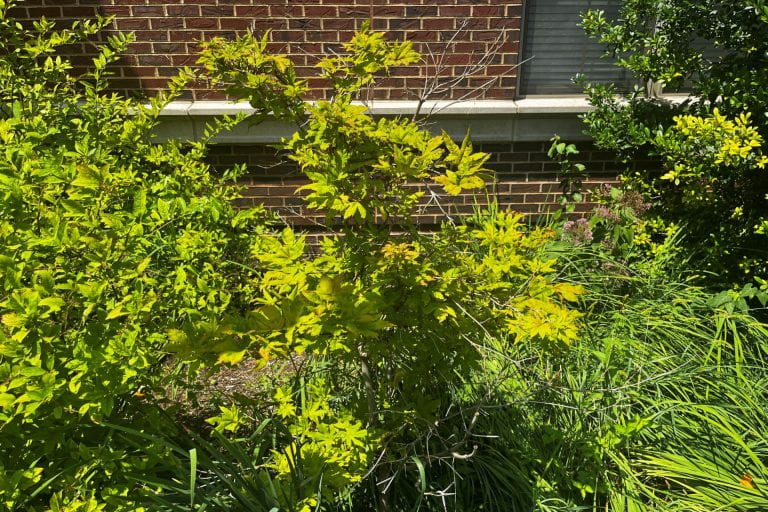
Full Moon Maple
Arbor Walk #135
The Full Moon Maple is a small, dense tree with unique large, showy leaves that is native to Japan. These leaves create beautiful fall foliage and are mainly sought after for landscaping.
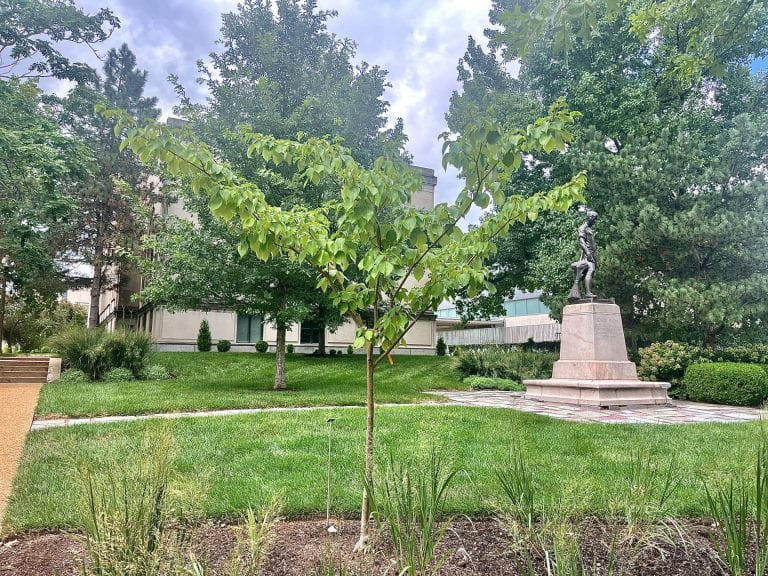
Giant Dogwood
Arbor Walk #165, Treekeeper ID #7247
The Giant Dogwood is a medium sized tree (50-60 feet at tallest) native to East Asia.
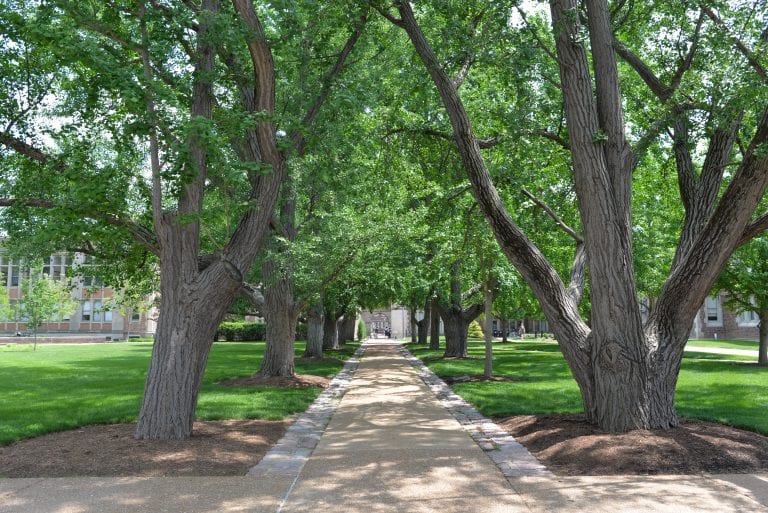
Ginkgo
Arbor walk #12, Treekeeper ID #1649
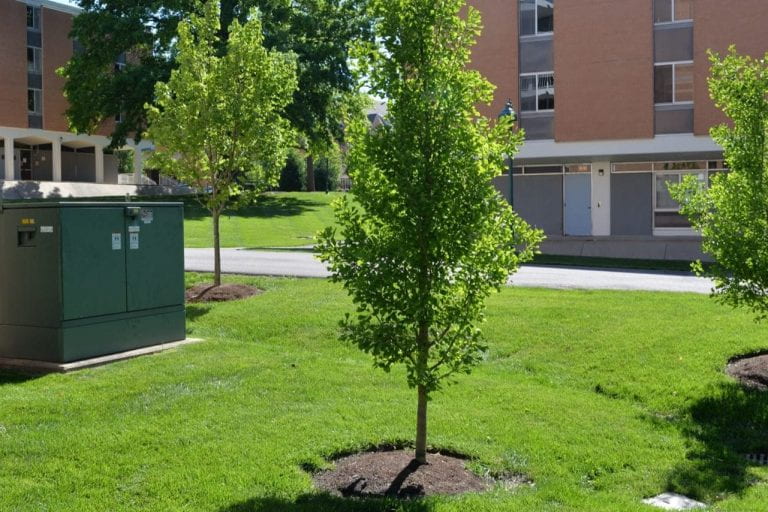
Ginkgo
Arbor walk #76, Treekeeper ID #5991
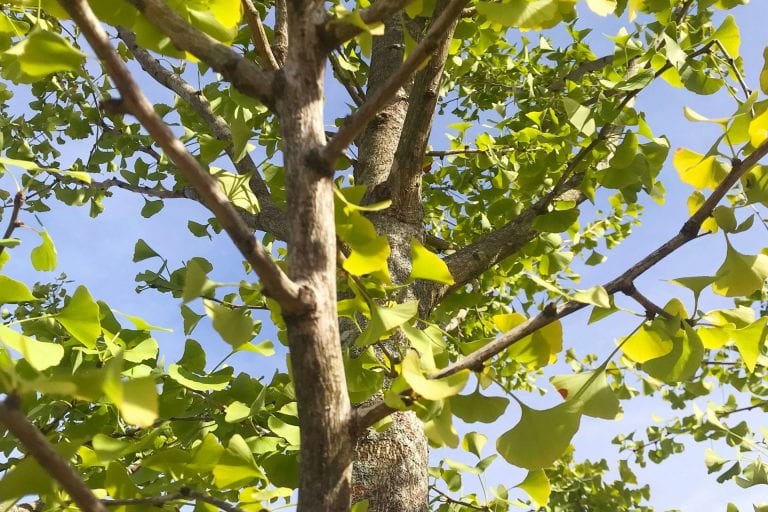
Ginkgo
Arbor walk #96, Treekeeper ID #5779
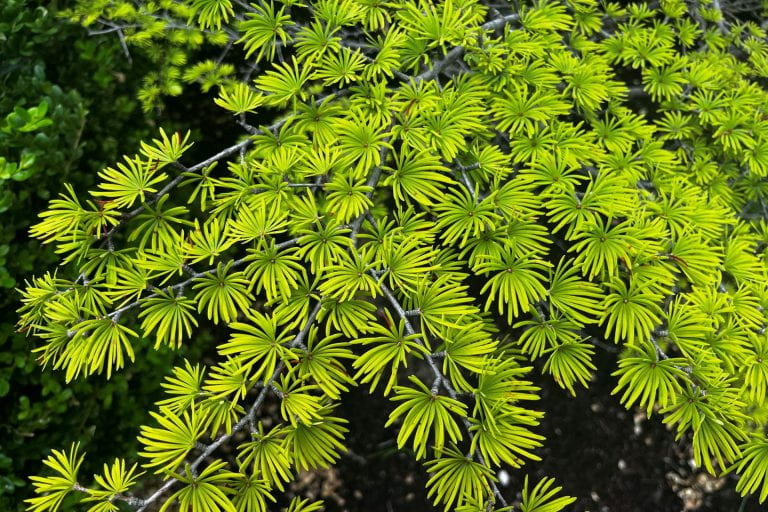
Golden Larch
Arbor Walk #116
One of the more unique members of the Pine family (Pinaceae), this tree has a circular spray of soft, thick needles and mature cones that resemble upside down succulents or artichokes. Originating from eastern China, this species thrives in the warm, wet environments of the American Midwest and Southeast.
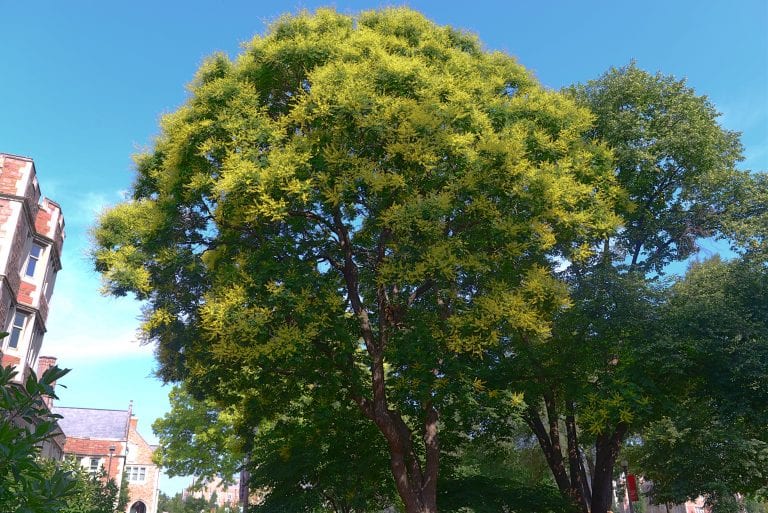
Golden Raintree
Arbor walk #24, Treekeeper ID #3978
This tree's unique foliage, summer blooming yellow flowers, and lantern-like fruit make it one of the most interesting trees in the campus forest.
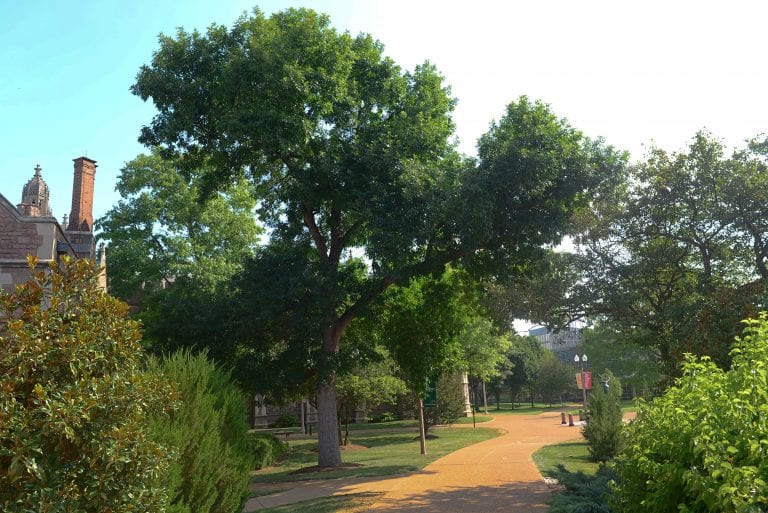
Green Ash
Arbor walk #23, Treekeeper ID #2384
This native tree species is threatened by the Emerald Ash Borer. Since its discovery in 2002, the Borer, a native of Asia, has killed hundreds of millions of ash trees in North America.
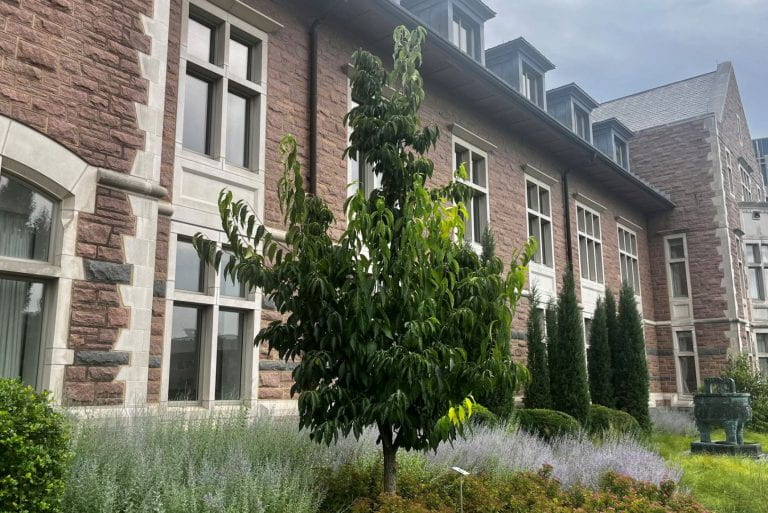
Hardy Rubbertree
Arbor Walk #120
This tree gets its name from the gummy sap contained in the tree's leaves, branches, and bark, which does not pour out like a milkweed but rather pulls apart with sticky strings like half-dried glue. Native to China, this tree has been traditionally used to treat high blood pressure, liver, and kidney issues.
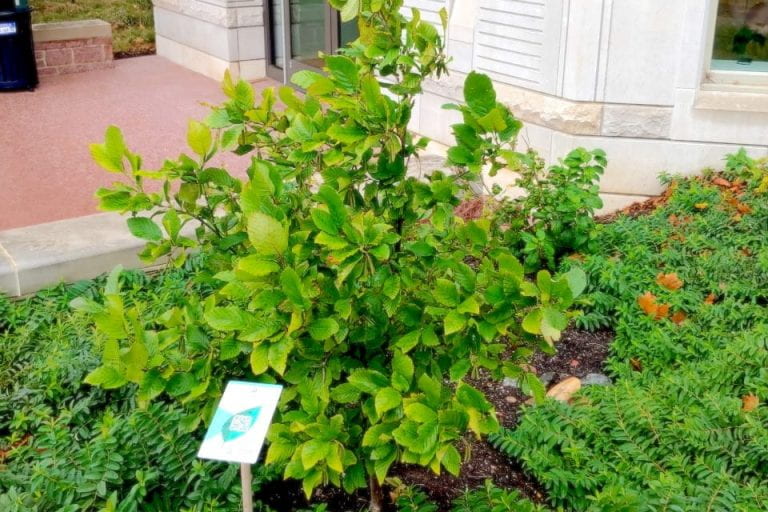
Hazel Alder
Arbor walk #97, Treekeeper ID #6102
Hazel Alder is a multi-stemmed small tree and can grow to 20′ high and up to 15′ wide forming thickets by suckering. It is native from Nova Scotia to Illinois and Missouri south to eastern Texas and northern Florida. It is an ideal selection for naturalizing or rain gardens.
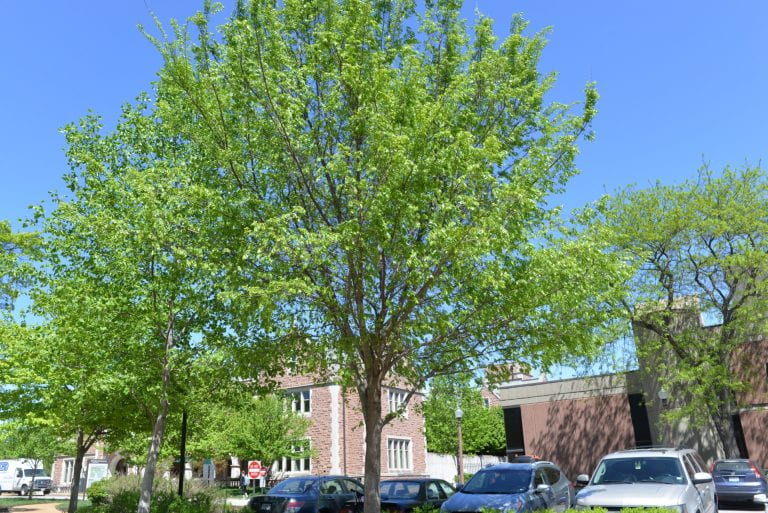
Hybrid Elm
Arbor walk #44, Treekeeper ID #2942
This medium-sized tree is hardy and tolerant to drought, heat, and poor soil which make it well suited as a replacement for the many elms used residential landscapes and city streets.
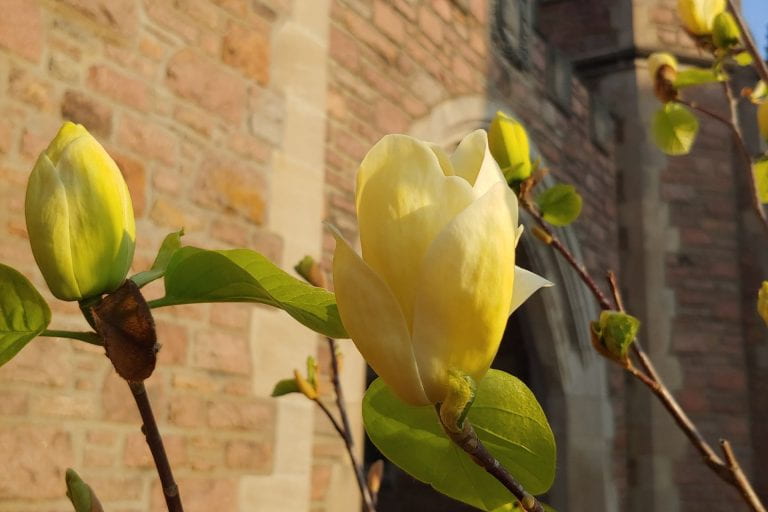
Hybrid Magnolia
Arbor walk #90, Treekeeper ID #5902
Magnolia 'Lois' is adaptive to the St. Louis region and was introduced in 1998 by the Brooklyn Botanical. It flowers in the Spring with a true pale yellow color and it grows to 30' tall and 20' wide.
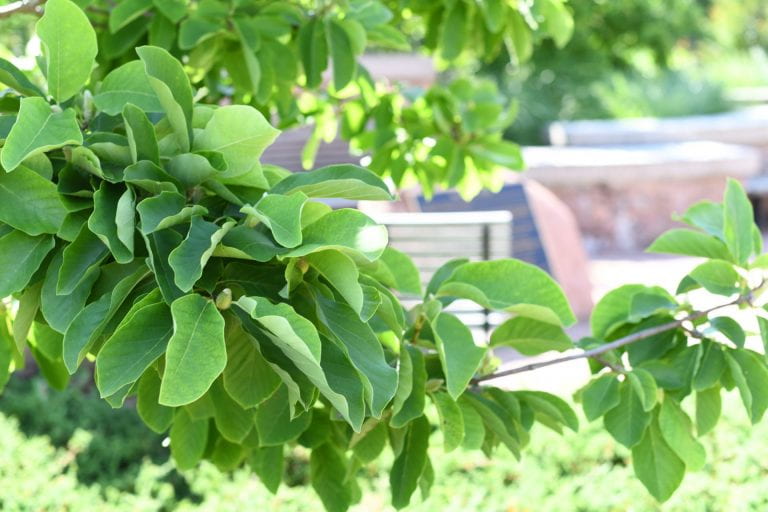
Hybrid Magnolia
Arbor walk #82, Treekeeper ID #3854
This is a deciduous hybrid magnolia resulting from a cross between M. acuminata and M. denudata. It is notable for its yellow flowers, late vegetative growth, compact pyramidal form, and ability to withstand both heat and cold.
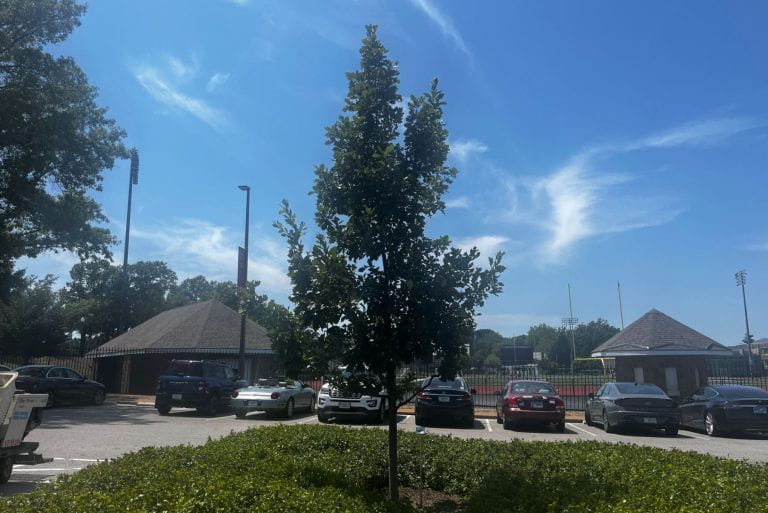
Hybrid Oak
Arbor Walk #125
The Heritage Oak is a hybrid between the English Oak (Quercus robur) and the Bur Oak (Quercus macrocarpa), two similar white oaks from different continents. These closely related species produce a sturdy, fast-growing oak with the large acorns of the Bur Oak and fall colors of the English Oak.
Hybrid Willow
Arbor Walk #117
This willow is a hybrid between the Bay Willow (Salix pentandra) and the Eastern Crack-willow (Salix euxina). It was developed at North Dakota State University and is known for its rounded shape, vigorous foliage, and its namesake reflective leaves that lend the 'Silver Lake' epithet.
Jack’s Hybrid Oak
Arbor Walk #146, Treekeeper ID #6549
This oak is a naturally occurring hybrid of White Oak (Quercus alba) and Swamp White Oak (Q. bicolor).
Japanese Cornel Dogwood
Arbor Walk #113
The Japanese Cornel Dogwood boasts elegantly characteristic dogwood leaves, edible fruits (yet quite astringent when raw), and traditional medicinal use in East Asia for liver and kidney illnesses.
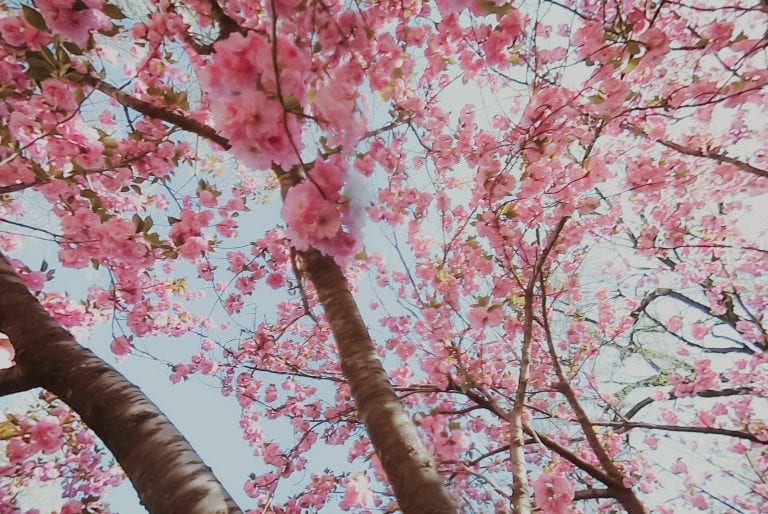
Japanese Flowering Cherry
Arbor walk #25, Treekeeper ID #4120
The Kwanzan variety is probably the hardiest of the double flowering cherry trees. Its new leaves are bronze colored and its fall color is a bronzy-orange. It blooms pink in mid spring and is the last of the cherry trees to bloom.
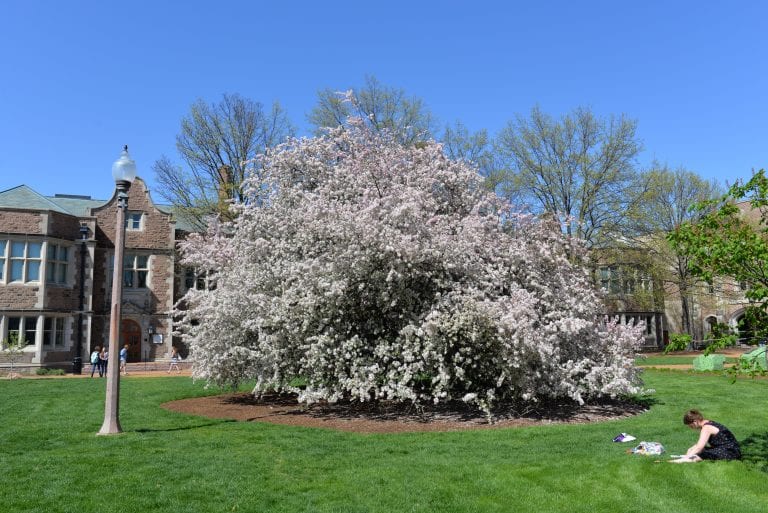
Japanese Flowering Crabapple
Arbor walk #11, Treekeeper ID #1607
This small flowering tree belongs to a family of trees that are popular for their profuse spring flowers. This tree also produces its namesake crabapples, which are edible except for the seed, yet very small. Arbor Walk #11 has a dome-like shape and students often study underneath the tree's canopy in hotter months.
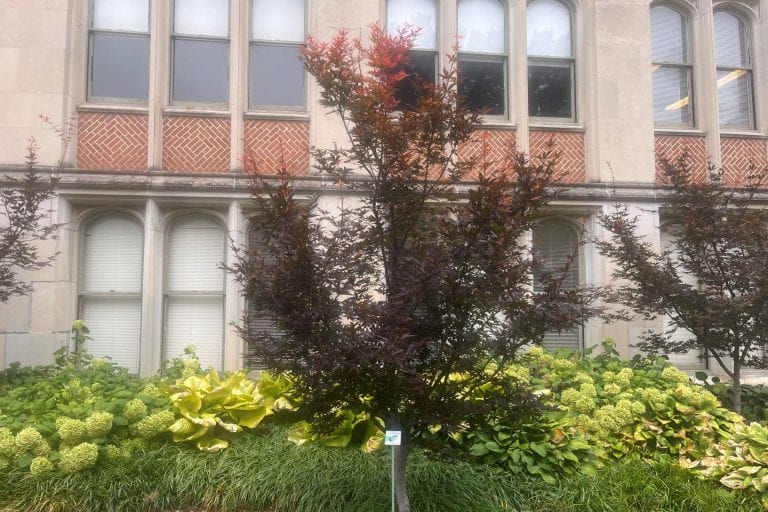
Japanese Maple
Arbor Walk #136
The Japanese Maple has been cultivated in and around its native range for hundreds of years, and since the 1800s, has been symbolic of Japanese Gardens to Western observers.
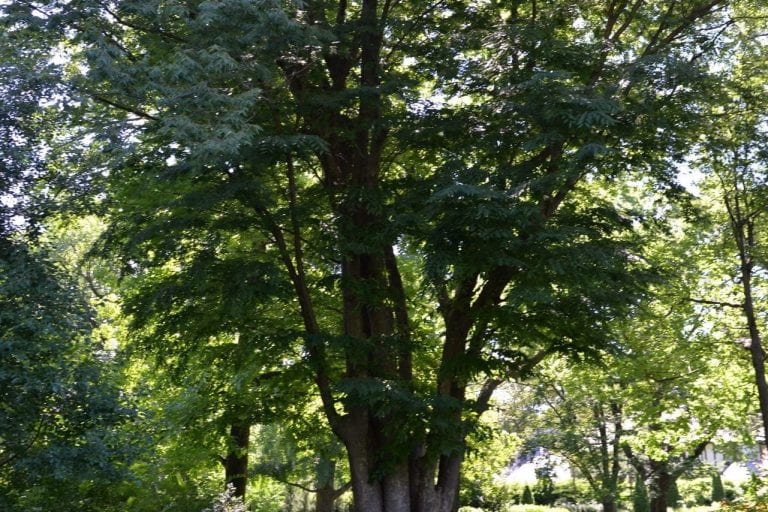
Japanese Zelkova
Arbor walk #59, Treekeeper ID #5340
A member of the Elm family which has been promoted as a replacement to American Elms because of its high degree of resistance to Dutch Elm Disease.
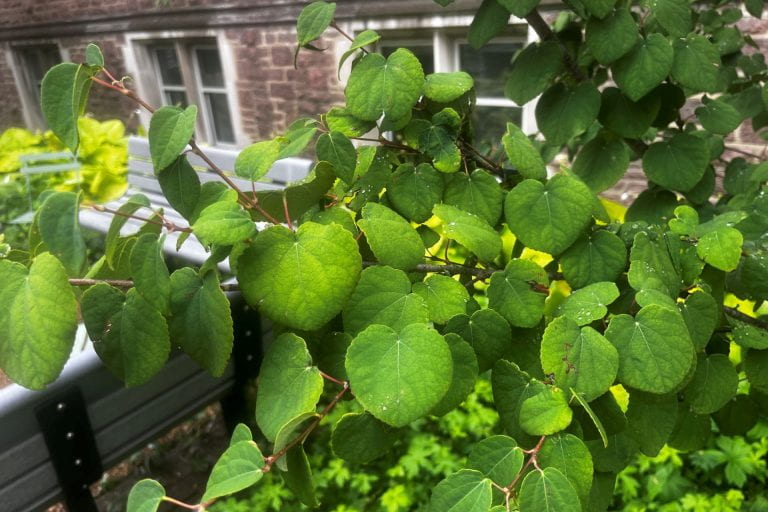
Katsuratree
Arbor Walk #106, Treekeeper ID #5947
The Katsuratree's native range in Japan and China. The 'Rotfuchs' cultivar is most commonly cultivated in the United States. In cultivation, it can grow to 60' tall and is noted for its beautiful shape and attractive foliage.
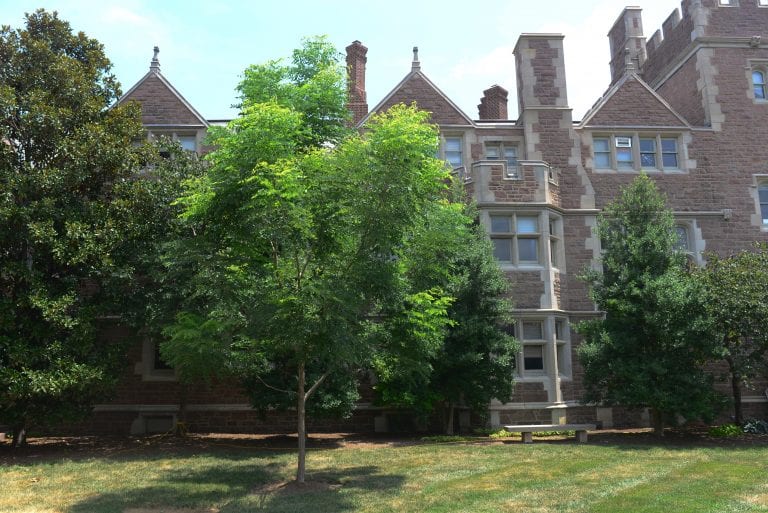
Kentucky Coffeetree
Arbor walk #7, Treekeeper ID #2253
This tree is a "seedless" variety of the native species. It is native to Missouri and the Midwest. Early settlers of Kentucky used the tree's seeds as a coffee substitute, hence its common name.
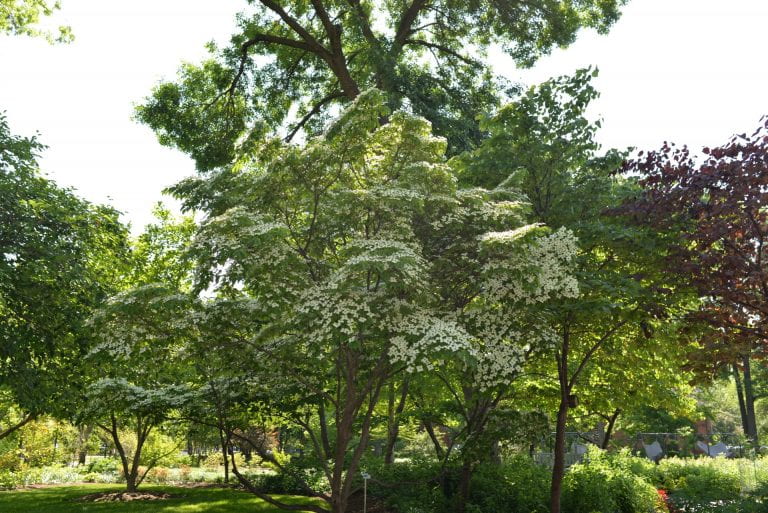
Kousa Dogwood
Arbor walk #41, Treekeeper ID #4568
This tree, native to Asia, is known for its four-petaled white flowers in June and its reddish-purple color in Fall.
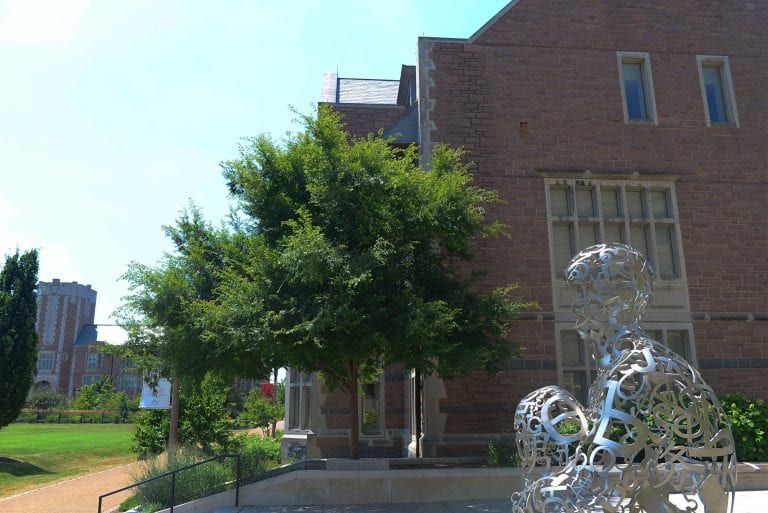
Lacebark Elm
Arbor walk #5, Treekeeper ID #3495
The Lacebark Elm is a large elm native to China that is known for its intricate bark and durable wood. It has strong resistance to the deadly Dutch Elm Disease, making it an ideal planting or hybridization target.
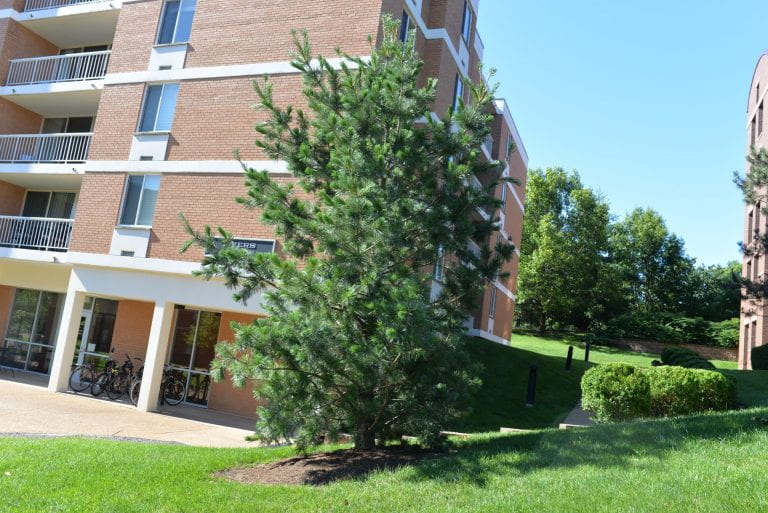
Limber Pine
Arbor walk #72, Treekeeper ID #3697
This under-used pine, native to the western United States, is more tolerant of alkaline soils than the Eastern white pine. The dark blue green needles help this tree stand out in the landscape.
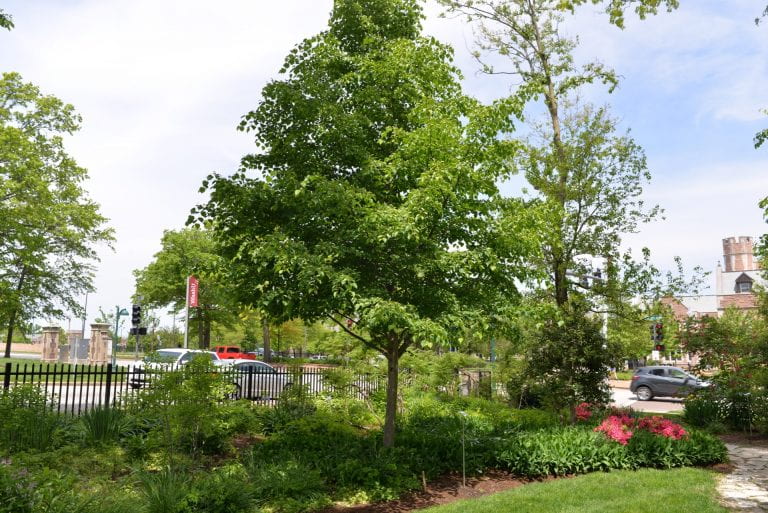
Littleleaf Linden
Arbor walk #42, Treekeeper ID #4386
The Little-Leaf Linden is uniquely adept at withstanding polluted environments, and is therefore a great shade tree for urban settings. It is a native to Europe and exists in the wild only in protected pockets of land, where it provides ecological benefits for moths and pollinators.
Loblolly Pine
Arbor Walk #126
The Loblolly Pine is an iconic tree in the Southeastern United States, dominating the southern pine forests and being grown for lumber in plantations in the region. It is tall, skinny in shape, and a vigorous grower.
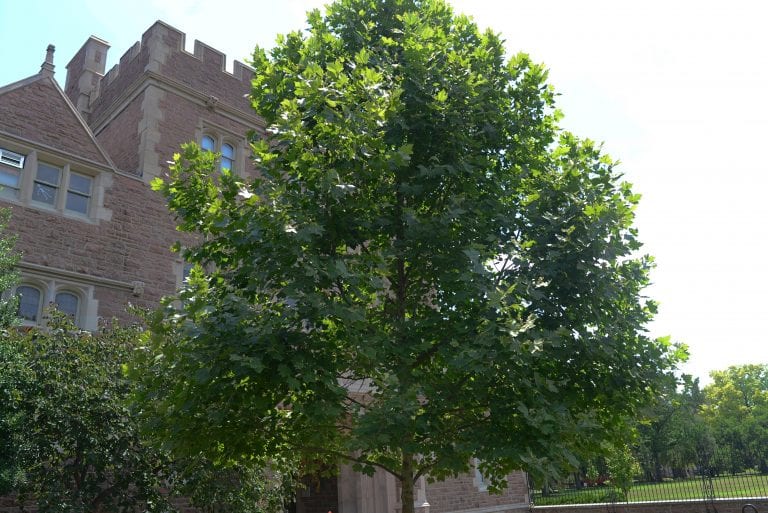
London Planetree
Arbor walk #6, Treekeeper ID #2200
The London Planetree is a hybrid of the Oriental Plane (Platanus orientalis) and American Sycamore (Platanus occidentalis), combining improved disease resistance with cold tolerance. The London Planetree is also extremely tolerant of pollution, and is even found to be an effective removal agent of air pollution particles.
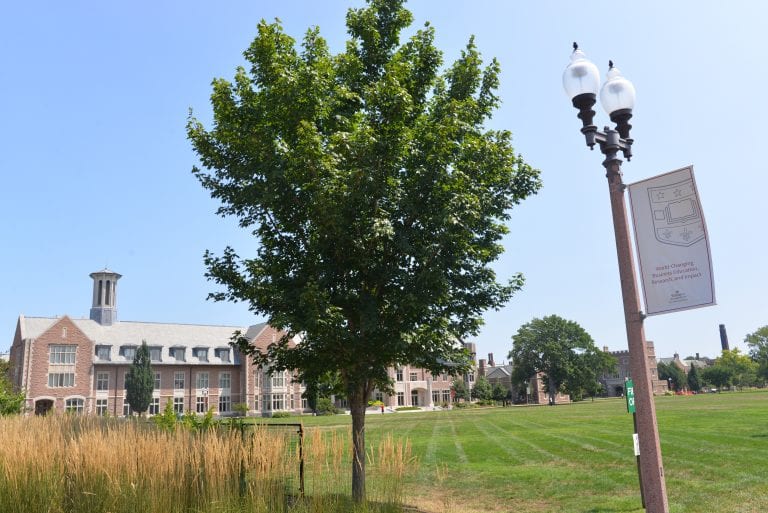
Miyabe Maple
Arbor walk #2, TreeKeeper ID #3153
This tree is native to Japan, although it has become endangered within its own native range. This cultivar was introduced at the Morton Arboretum in Illinois.
Nannyberry Viburnum
Arbor Walk #133
The Nannyberry Viburnum features edible berries that persist in winter and abundant white flowers. It is a tall shrub or small tree, reaching about 15' in height as a multi-stemmed shrub, or pruned into one trunk up to 30'.
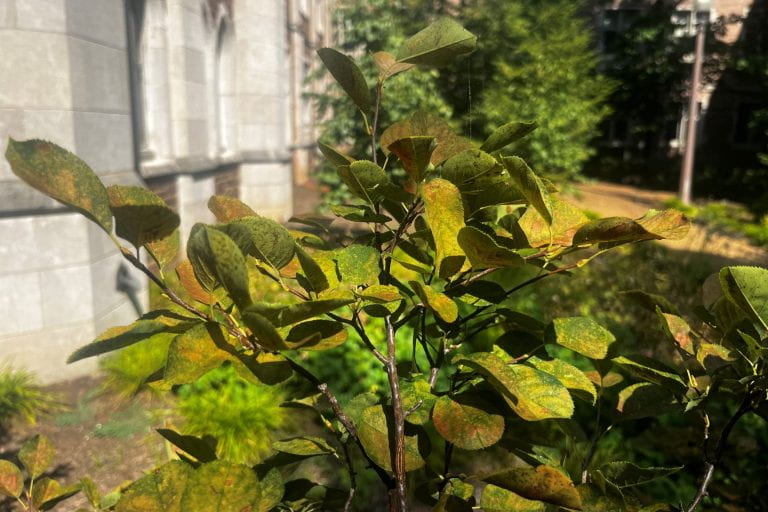
Nantucket Serviceberry
Arbor Walk #131
This shrub is quite rare, endemic to Maine, Massachusetts, and other isolated pockets along the East Coast from Nova Scotia to South Carolina. Its edible berries and pollen-tipped white flowers are notable characteristics of this plant, which inhabits sandy areas mainly along the coastline.
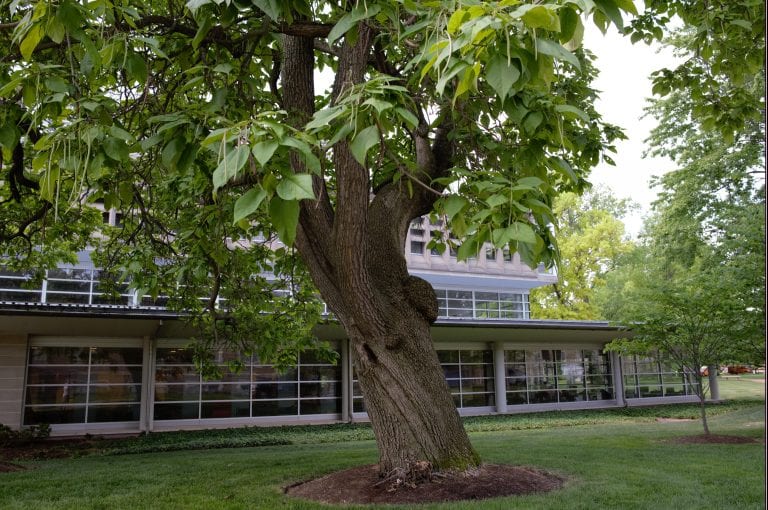
Northern Catalpa
Arbor walk #10, TreeKeeper ID #1794